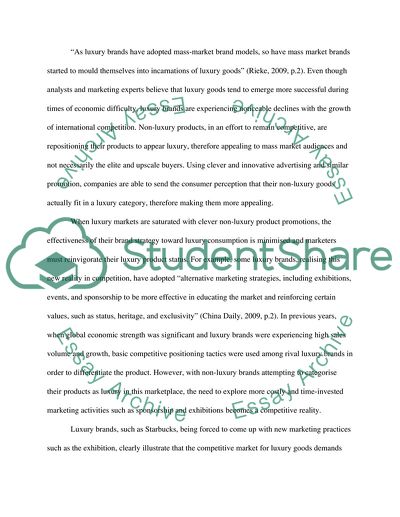Cite this document
(Luxury Brand Marketing and Starbucks Case Study, n.d.)
Luxury Brand Marketing and Starbucks Case Study. Retrieved from https://studentshare.org/marketing/1730061-market-management-starbucks
Luxury Brand Marketing and Starbucks Case Study. Retrieved from https://studentshare.org/marketing/1730061-market-management-starbucks
(Luxury Brand Marketing and Starbucks Case Study)
Luxury Brand Marketing and Starbucks Case Study. https://studentshare.org/marketing/1730061-market-management-starbucks.
Luxury Brand Marketing and Starbucks Case Study. https://studentshare.org/marketing/1730061-market-management-starbucks.
“Luxury Brand Marketing and Starbucks Case Study”, n.d. https://studentshare.org/marketing/1730061-market-management-starbucks.


